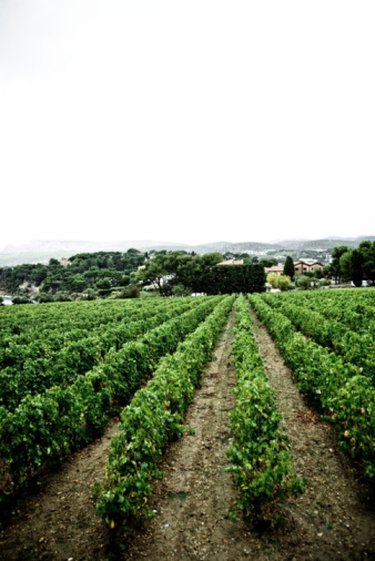
Copper sulfate is commonly used in gardening and agriculture as a fungicide and fertilizer. Used in the correct concentrations, copper sulfate prevents damage to plants from mold and fungi. Plants growing in soils that are deficient in copper will benefit from the application of a copper sulfate-based fertilizer. However, overuse of copper sulfate -- or other copper-based products -- can cause a toxic buildup of copper in the soil, resulting in a variety of negative effects.
Soil Improvement
Video of the Day
Copper sulfate-based fertilizers and sprays are commonly used to correct copper-deficient soils. When used in the correct amounts, copper sulfate prevents a variety of problems. Some of the issues associated with copper deficiency include reduced disease resistance, wilting, reduced seed and fruit yields and an inability to flower. Young plant tissue growing in copper-deficient soil also shows signs of chlorosis, distortion and even death. When used in combination with regular soil testing, copper sulfate acts as a preventative deterrent to these problems.
Video of the Day
Toxic Effects
The overapplication of copper sulfate in an area has a lasting negative impact on plants growing there. One of the potential negative effects of copper sulfate includes leaf discoloration, characterized by dark green leaves followed by white discoloration and resulting from induced iron chlorosis. The overuse of copper sulfate can also result in root damage, characterized by short, thick, stub-like growths of root. The root damage caused by the overapplication of copper sulfate can result in overall wilting, reduced growth or death of the plant.
Fungus Protection
Copper sulfate is a common ingredient in several fungicides used in gardens and fields. Copper sulfate-based fungicides are typically delivered as foliant sprays that are mixed with water and another chemical-hydrated lime or soda ash. These mixtures are commonly known as the Bordeaux and Burgundy mixtures. Used in this fashion, copper sulfate can act as a protective barrier against invasive fungi or a removal agent if used shortly after the initial fungal infection.